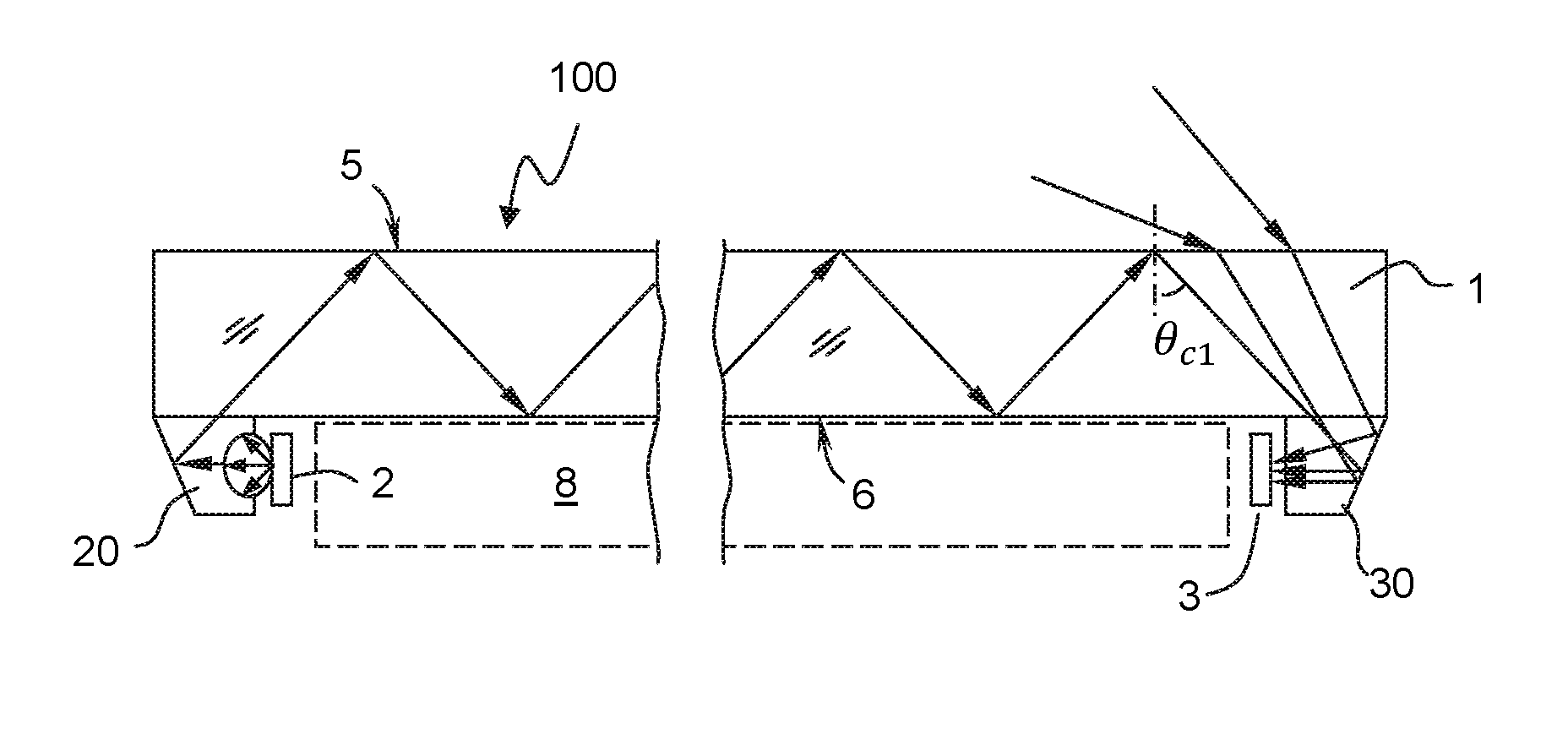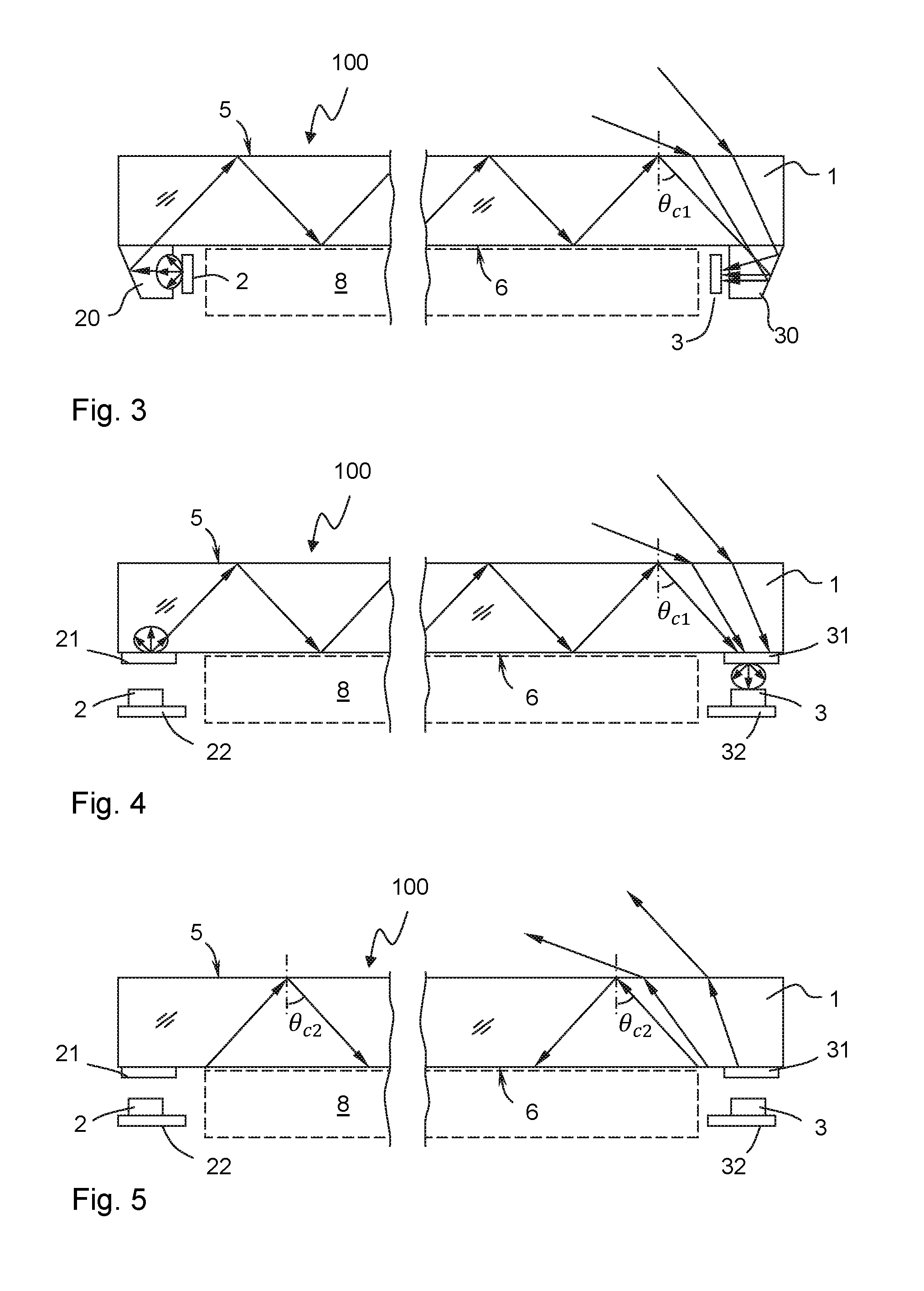Laminated optical element for touch-sensing systems
a technology of touch sensor and optical element, applied in the field of touch sensor, can solve the problems of affecting the user experience, difficult and/or costly to achieve, and the change of light received by one or more detectors, and achieve the effect of convenient user interfa
- Summary
- Abstract
- Description
- Claims
- Application Information
AI Technical Summary
Benefits of technology
Problems solved by technology
Method used
Image
Examples
Embodiment Construction
[0043]In the following, embodiments of the present invention will be presented for an example of a laminated optical element, as well as a touch-sensitive apparatus incorporating such a laminated optical element. Throughout the description, the same reference numerals are used to identify corresponding elements.
[0044]FIG. 1A illustrates the concept of touch detection based on attenuation by FTIR (Frustrated Total Internal Reflection) of propagating light. According to this concept, light is transmitted inside a panel 1 along a plurality of well-defined propagation paths. The panel 1 is made of a solid material in one or more layers and may have any shape. The panel 1 defines an internal radiation propagation channel, in which light propagates by internal reflections. In the example of FIG. 1A, the propagation channel is defined between the boundary surfaces 5, 6 of the panel 1, and the front (top) surface 5 allows the propagating light to interact with touching objects 7 and thereby...
PUM
 Login to View More
Login to View More Abstract
Description
Claims
Application Information
 Login to View More
Login to View More - R&D
- Intellectual Property
- Life Sciences
- Materials
- Tech Scout
- Unparalleled Data Quality
- Higher Quality Content
- 60% Fewer Hallucinations
Browse by: Latest US Patents, China's latest patents, Technical Efficacy Thesaurus, Application Domain, Technology Topic, Popular Technical Reports.
© 2025 PatSnap. All rights reserved.Legal|Privacy policy|Modern Slavery Act Transparency Statement|Sitemap|About US| Contact US: help@patsnap.com



